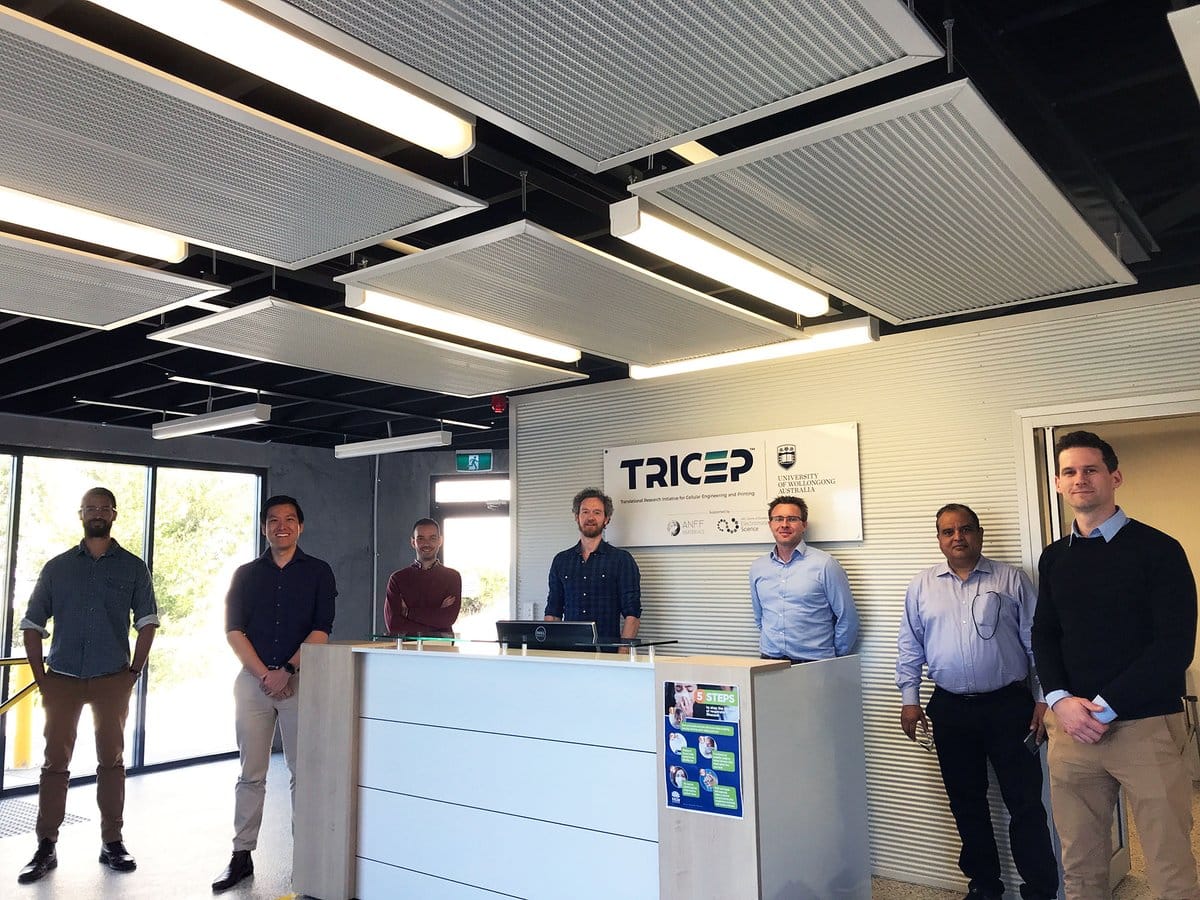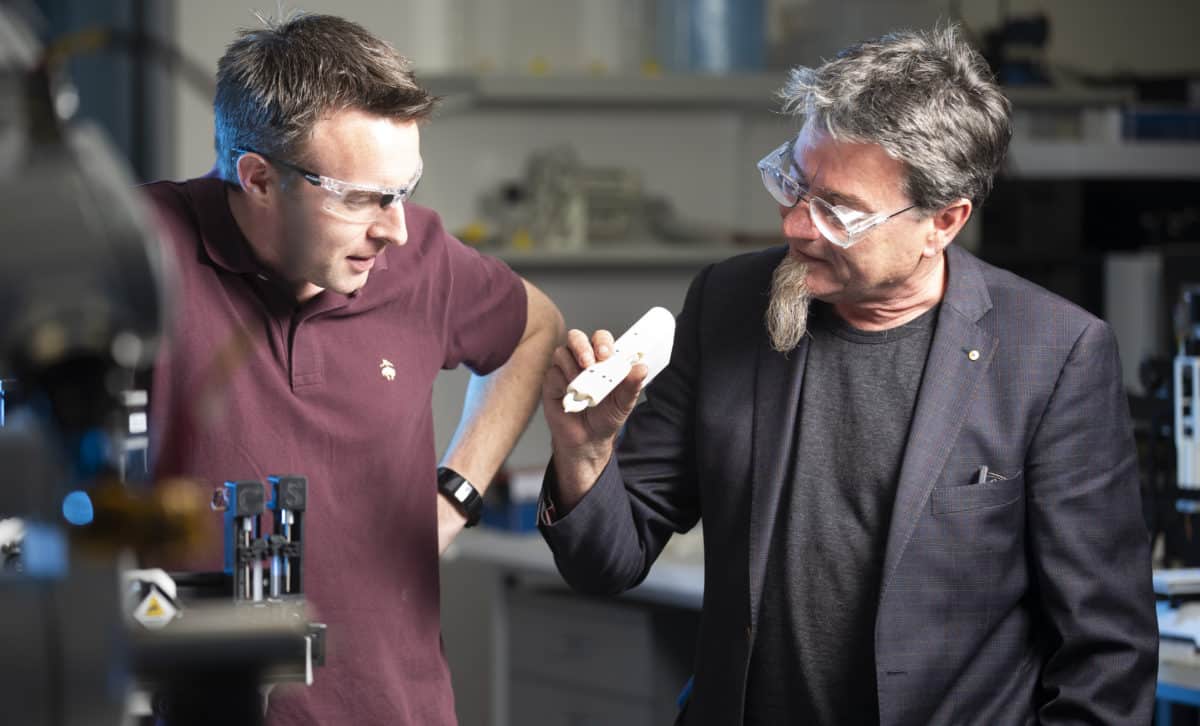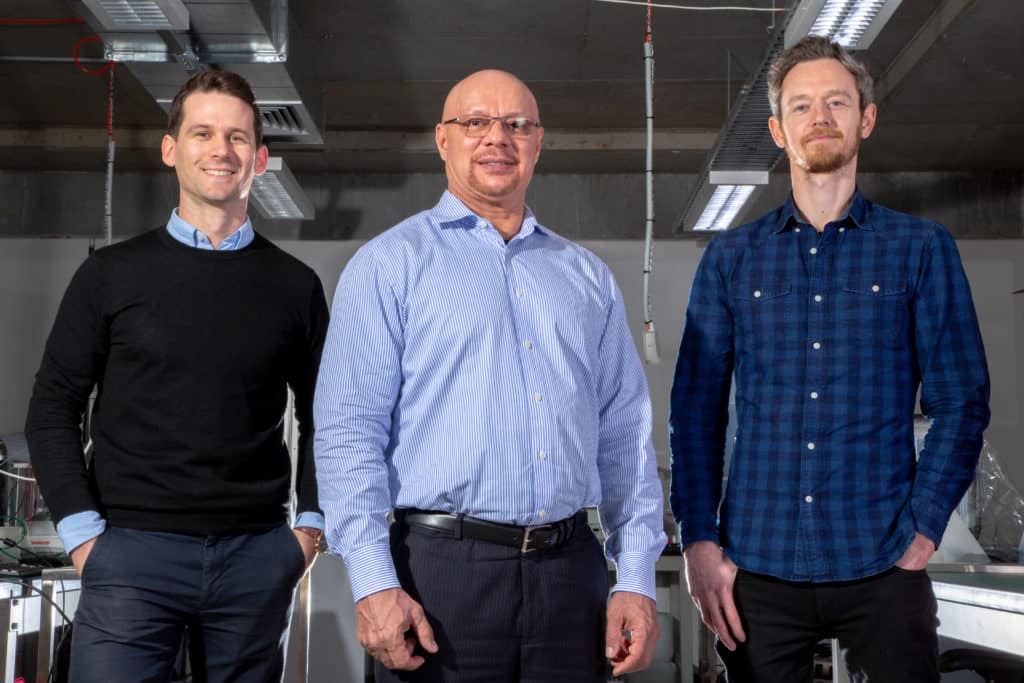In just two years, a robotic device that directly prints a patient’s own skin cells on a burn or wound may undergo the first human clinical trial. The 3D bioprinting system for intraoperative skin regeneration developed by the Australian biotechnology start-up Inventia Life Science has gained new momentum, thanks to the Australian government and two strong new partners, world-renowned burns expert Fiona Wood and leading bioprinting researcher Gordon Wallace.
The system, Codenamed Ligō, comes from the Latin “to bind” and is expected to revolutionize wound repair by quickly and accurately delivering multiple cell types and biological materials to form a new skin layer on damaged skin. The new system is expected to replace the current wound healing method that only attempts to repair the skin, and is developed by Inventia Skin, a subsidiary of Inventia Life Science.
“When we started Inventia Life Science, our vision was to create a technology platform with the potential to bring enormous benefit to human health. We are pleased to see how fast that vision is progressing alongside our fantastic collaborators. This Federal Government support will definitely help us accelerate even faster,” said Dr. Julio Ribeiro, CEO, and co-founder of Inventia.
In order to support Australia’s biomedical and medical technology fields, the Australian government announced that it will invest 1 million Australian dollars ($723,085) to enhance the regeneration capacity of the Ligõ 3D bioprinting system. The project is one of 21 initiatives supported by the federal government’s BioMedTech Horizons (BMTH) program, which is operated by the non-profit organization MTPConnect and aims to accelerate the growth rate of Australia’s medical technology, biotechnology, and pharmaceutical industries.
In late July 2020, Australian Federal Minister of Health Greg Hunt announced that the funding of the program is expected to enable the device to enter the first human clinical trials faster. In addition, the team also received funding from the Stem Cell Therapy Group of the Medical Research Future Fund, and collaborated with Pritinder Kaur, a stem cell specialist at Scottin University in Perth, to use the Ligō device to provide stem cell-based products that can improve skin regeneration.
According to Inventia, skin is the primary point of injury in accidents and certain diseases. When the skin is severely damaged, it will heal slowly, usually leaving scars. In addition, it is susceptible to infection during the entire regeneration process. This is the main problem of the body’s first protective barrier, and it is also a good reason to find new ways to speed up the treatment process.
Focusing on creating a robot that can directly print tiny droplets containing patient skin cells and biomaterials on wounds, allowing Inventia to reproduce functional and aesthetically normal skin. In addition, the researchers behind Lig® technology believe that this can be achieved in a single procedure in the operating room, thereby reducing treatment costs and length of stay, and minimizing the risk of infection.
The device uses Inventia’s patented technology, which has been successfully used in laboratory-based medical research and drug discovery in its RASTRUM platform. The company hopes to bring this core technology into the clinic through the Ligō robot, which is expected to break new ground with some leaders in the field of skin regeneration in Australia.

Researchers from the ARC Center of Excellence in Electronic Materials Science (ACES) at the University of Wollongong, Australia will also use their internationally renowned bio-ink expertise to develop a new 3D bioprinting system to treat burns during surgery. Under the leadership of ACES director Gordon Wallace, the researchers will provide important opinions on the development process of bioprinters and bioinks. Since the ACES team has established a strong relationship with Inventia, this news is not surprising.
“ACES is at the forefront of building new approaches to 3D printing, and this project will draw on this significant success we have had in this space in recent years,” Wallace said. “3D printing has emerged as the most exciting advance in fabrication in decades, and I’m excited to continue to build our local capabilities in this area to establish a new, innovative and sustainable industry for the Illawarra [a region in the Australian state of New South Wales]. Being part of this skin regeneration project will help to put Wollongong on the map for the commercial manufacture of bioprinting technologies.”

For project partner Fiona Wood (the world’s leading burn specialist and surgeon) and the Director of Burn Services in Western Australia, this is not the first time she has sought bioengineering to help patients. In the early 1990s, experts pioneered an innovative “sprayed skin” technology, which can greatly reduce the permanent scars of burn victims, and it attracted attention in 2002 when the biggest survivor of the Bali bombing arrived in Royal Perth. hospital.
Wood commented: “The combination of these grants is a model for the application of the Medical Research Future Fund in the entire process of translational research to commercialization, which can bring better patient outcomes.”
Burns is the fourth most common type of trauma in the world. An estimated 11 million burn patients worldwide are treated each year, and serious wounds cause 300,000 deaths. In Australia alone, the Wood Foundation reported that 200,000 people suffer burns each year, costing the Australian community more than 150 million Australian dollars each year. Burns are very scary. They bring complicated problems to patients and clinicians, and the road to recovery is difficult to solve. Inventia Skin expects that bioprinting technology will change the rules of the game in the field of wound medicine. Moreover, combining the expertise of bioprinting and burns founding experts, coupled with the funding and support of local governments, can develop one of the most innovative 3D bioprinting systems to treat burns during surgery. Most importantly, It can be put into use in 2022.



